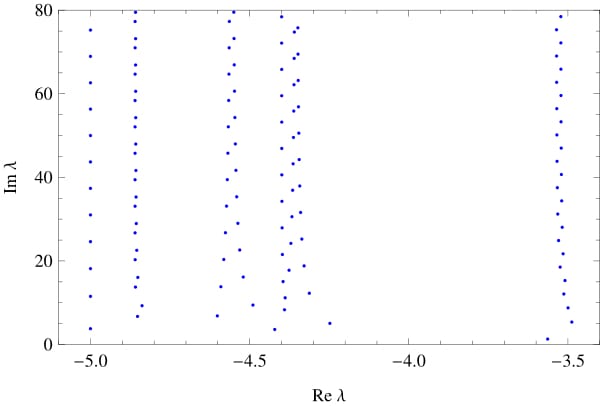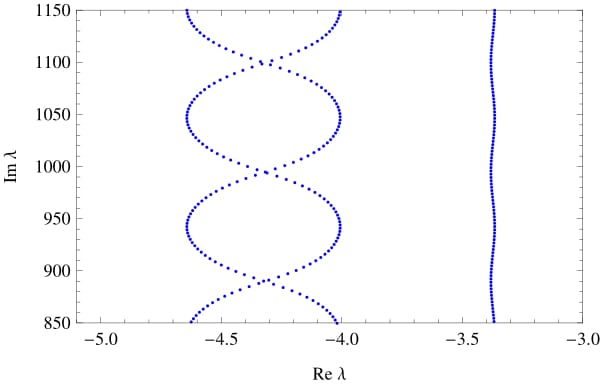Damped wave equation on graphs and asymptotics of eigenvalues
In the paper
P. Freitas, J. Lipovsky: Eigenvalue asymptotics for the damped wave equation on metric graphs, J. Diff. Eq. 263 (2017), 2780–2811
we considered the linear damped wave equation
∂tt wj(t,x) + 2aj(x) ∂t wj(t,x) = ∂xx wj(t,x) + bj(x) wj(t,x),
on a finite metric graph, where aj is the damping function and bj is the potential on the j-th edge. We found interesting results on the spectrum of the corresponding operator. The problem was previosly studied on a segment and on a manifold, but the metric graph provides an interesting intermediate case between a segment and a manifold.
We found that for an equilateral graph (a graph with the same lengths of the edges) sequences of eigenvalues are formed, with their real parts converging to a certain number as their imaginary parts going to infinity. These numbers we called high-frequency abscissas. We found upper and lower bounds on the number of high-frequency abscissas depending on the number of edges of an equilateral graph and its structure.

|
If the ratio of the lengths of the edges is irrational, the number of high-frequency abscissas can go to infinity.

|

|